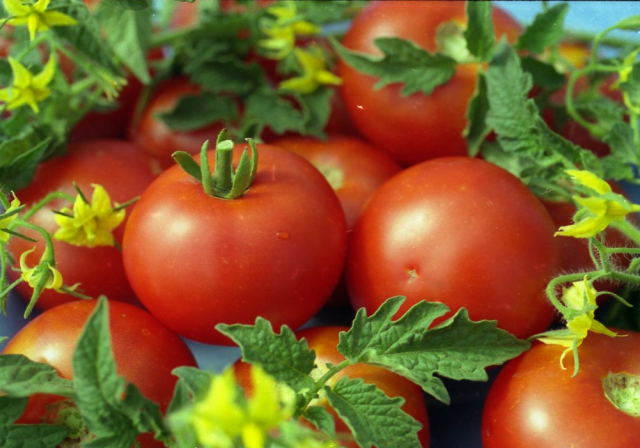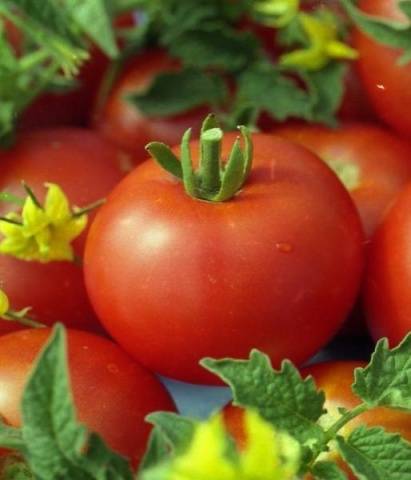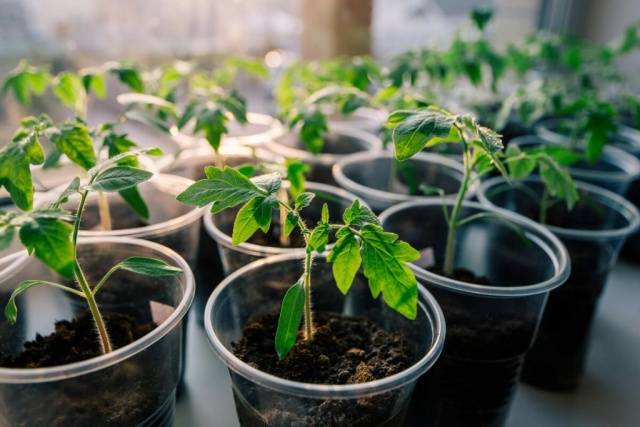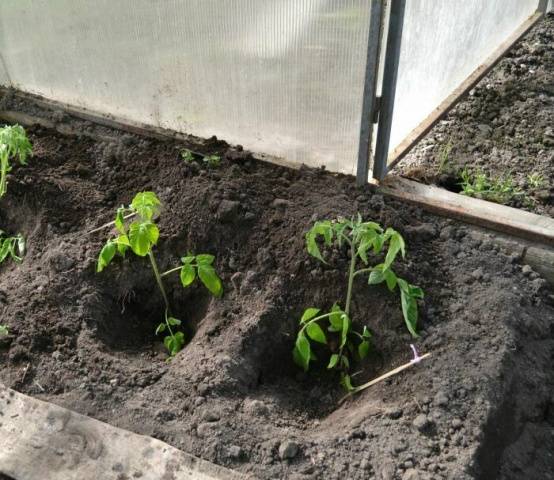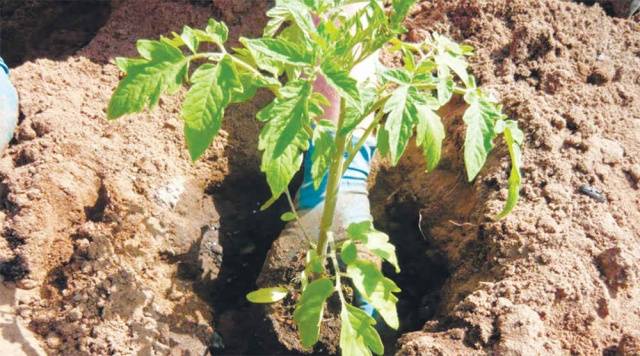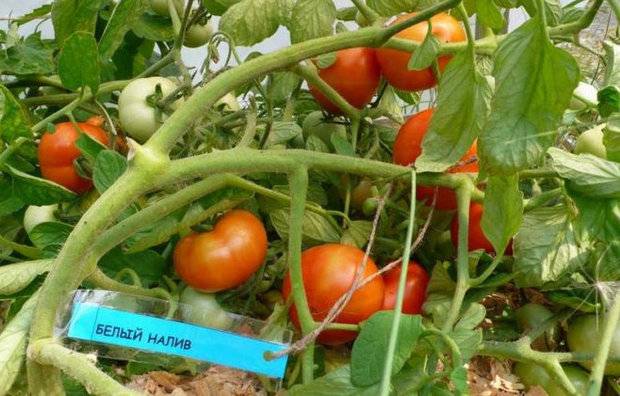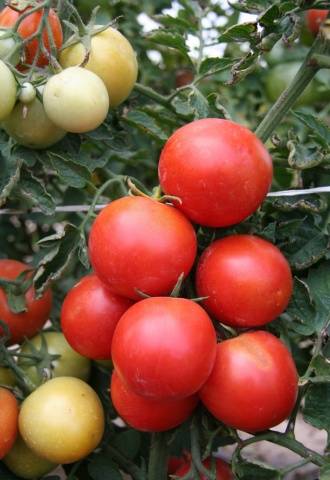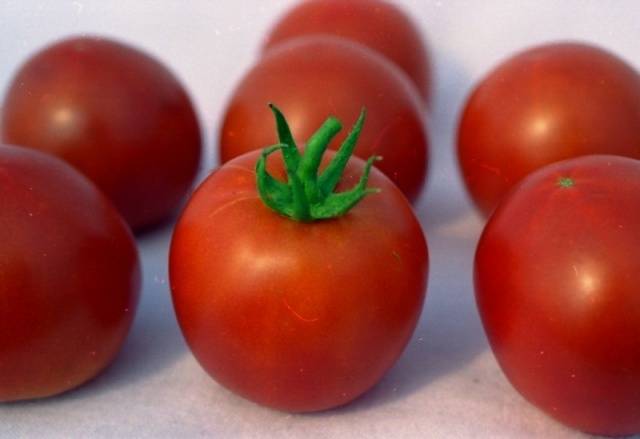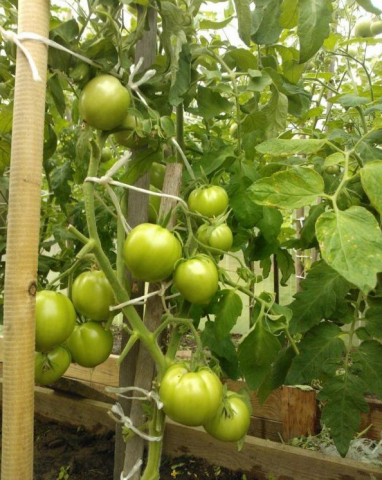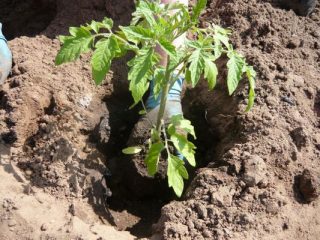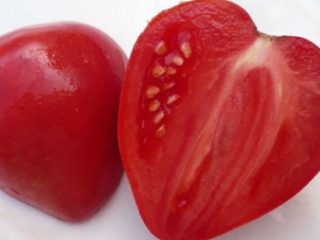Content
Tomatoes White filling 241 were obtained in 1966 by breeders from Kazakhstan. Since that time, the variety has become widespread in Russia and other countries. It was used for cultivation in summer cottages and collective farm fields.
The variety stands out for its unpretentiousness, early ripening and good fruit taste. Plants produce crops in cold summers and in dry conditions.
Description of the variety
The characteristics and description of the tomato variety White filling are as follows:
- determinant variety;
- early maturation;
- bush height up to 70 cm in closed ground and up to 50 cm in open areas;
- average number of leaves;
- powerful root system, it grows 0.5 m to the sides, but does not go deeper into the ground;
- leaves of medium size;
- wrinkled light green tops;
- from 3 flowers in the inflorescence.
The fruits of the White filling variety also have a number of distinctive features:
- round form;
- slightly flattened fruits;
- thin peel;
- fruit size - up to 8 cm;
- unripe tomatoes are pale green in color, becoming lighter as they ripen;
- ripe tomatoes are red;
- the mass of tomatoes is more than 100 g.
Variety yield
Tomatoes are harvested 80-100 days after germination. In open areas, the fruit takes a little longer to ripen.
From one bush of the variety, from 3 kg of fruits are harvested. A third of the crop ripens at the same time, which is convenient for subsequent sale or canning. According to its characteristics and description of the variety, the White filling tomato is suitable for fresh consumption and for obtaining homemade preparations. The fruits tolerate long-term transportation well.
Landing order
Tomatoes are grown by seedlings. First, the seeds are planted, while the grown tomatoes are transferred to a greenhouse or to an open-air garden. The soil for planting in the fall is fertilized with humus.
Getting seedlings
Tomato seeds are planted in small boxes filled with garden soil, humus and peat. It is recommended to put the soil in a hot oven or microwave beforehand. The treated soil is left for two weeks.
Work begins in the second half of February. The seeds are soaked in water for a day, where you can add a little salt.
The containers are covered with foil or glass, then moved to a dark place. For germination, seeds require a constant temperature of 25 to 30 degrees.
After emergence, tomatoes are moved to a windowsill or to another place where there is access to light. Plants are provided with access to sunlight for 12 hours. As the soil dries up, tomatoes White filling are sprayed with warm water from a spray bottle.
Two weeks before planting the plants on the garden bed, they are transferred to the balcony, where the temperature is maintained at 14-16 degrees. The first few days, the seedlings are hardened for 2 hours. Gradually, the time it spends in the fresh air is increased.
Growing in a greenhouse
Soil preparation in a greenhouse for tomatoes White filling is carried out in the autumn. It is recommended to completely replace the top layer of soil 10 cm thick, since insects and fungal spores hibernate in it.
Dig up the soil under the tomatoes and add humus. Tomatoes have not been grown in the same greenhouse for two years in a row. After eggplants and peppers, tomatoes are not planted due to the presence of similar diseases.For this culture, the soil is suitable where onions, garlic, beans, cabbage, cucumbers previously grew.
Seedlings are transferred to a heifer at the age of one and a half to two months. Holes with a depth of 20 cm are prepared under the tomatoes.They are arranged in a checkerboard pattern with a step of 30 cm.
Tomatoes are carefully transferred into the holes along with an earthen clod and covered with soil. The soil should be compacted, after which the plants are watered abundantly.
Landing in open ground
Tomato White filling is transferred to open ground when constant warm weather is established, when spring frosts pass. By this time, the seedlings have a large root system, a height of up to 25 cm and 7-8 leaves.
The landing site must be protected from the wind and be constantly illuminated by the sun. It is necessary to prepare the beds in the fall: dig them up, add compost (5 kg per square meter), substances with phosphorus and potassium (20 g each), nitrogen-containing substances (10 g).
Plants are placed at a distance of 30 cm. 50 cm are left between the rows. After transferring the seedlings, the soil is compacted and irrigated. A wooden or metal peg is installed as a support.
Tomato care
Tomato White filling needs constant care, which includes watering and feeding. Periodically, plantings are treated for diseases and pests. For tomatoes, it is necessary to loosen the soil in order to improve its water and air permeability.
The variety does not need pinching. In open areas, it is recommended to tie up the plants so that they do not fall in the rain or wind.
Watering
After transferring to a permanent place, the tomatoes are not watered for a week. In the future, the introduction of moisture will be required once or twice a week.
Regular watering allows you to maintain soil moisture at 90%. Air humidity should be kept at 50%, which is ensured by ventilating the greenhouse with tomatoes.
Tomatoes White filling is watered at the root, trying to protect the leaves and stem from moisture. Work should be carried out in the morning or evening, when there is no direct exposure to the sun. The water must settle and warm up, only after that it is used for irrigation.
Before the appearance of inflorescences, tomatoes are watered twice a week, the water consumption for each bush does not exceed 2 liters. During the flowering period, tomatoes should be watered once a week with the maximum allowable volume of water (5 liters).
Watering is combined with loosening the soil. It is important to avoid the formation of a dry crust on the surface. Tomatoes also need to be hilled, which contributes to the development of the root system.
Top dressing
During the season, tomatoes White filling are fed according to the following scheme:
- Two weeks after transferring the plants to the ground, a urea solution is prepared. A bucket of water requires a tablespoon of this substance. 1 liter of fertilizer is poured under each bush.
- After the next 7 days, mix 0.5 l of liquid chicken manure and 10 l of water. For one plant, 1.5 liters of the finished product are taken.
- When the first inflorescences appear, wood ash is added to the soil.
- During the period of active flowering, 1 tbsp is bred in a bucket of water. l. potassium guamate. This amount is enough to water two tomato bushes.
- During the ripening of the fruits, planting is sprayed with a superphosphate solution (1 tbsp. L. Per liter of water).
Folk remedies are used to feed tomatoes. One of them is a yeast infusion that stimulates plant growth. It is obtained by mixing 2 tbsp. l. sugar and a packet of dry yeast, which are diluted with warm water.
The resulting solution is added to 10 l of water. For watering for each bush, 0.5 liters of the resulting product is enough.
Disease treatment
As the reviews on the White filling tomatoes show, this variety is rarely exposed to fungal diseases.Due to early ripening, harvesting occurs before late blight or other diseases have time to develop.
For prevention, it is recommended to treat tomatoes with Fitosporin, Ridomil, Quadris, Tatu. Of the folk remedies, onion infusions, preparations on milk whey, and saline are considered the most effective.
The development of tomato diseases occurs at low temperatures, high humidity and too dense plantings. Compliance with the microclimate in the greenhouse will help to avoid the spread of diseases: regular ventilation, optimal soil and air humidity.
Testimonials
Conclusion
Tomato White filling gained its popularity several decades ago. It is grown in regions with different climatic conditions. The seeds of the variety are planted at home to obtain seedlings, which are transferred to open or closed ground.
The variety gives an early harvest and does not require pinching. Planting care includes watering, the use of fertilizers and preventive treatment for diseases.
